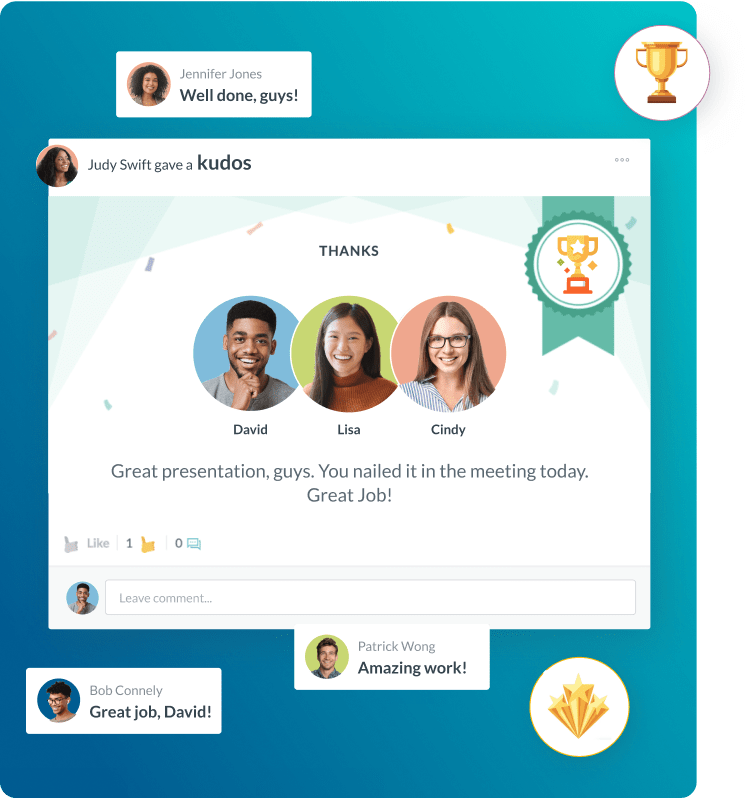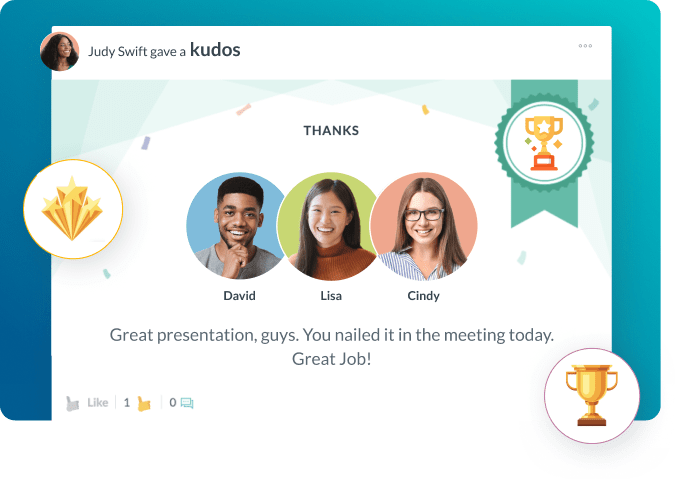Employee Experience (EX)
- The Importance of a Robust Employee Experience
- The Business Relevance of a Positive Employee Experience
- Key Principles of a High-Impact Employee Experience Strategy
- Value Comparison: Employee Experience Versus Employee Engagement
- Best Practices for Optimizing the Employee Experience
- Pitfalls to Avoid in Employee Experience Initiatives
- Real-World Industry Applications of Employee Experience
- Implementing a Strategic Employee Experience Plan
- Future Outlook and Emerging Trends in Employee Experience
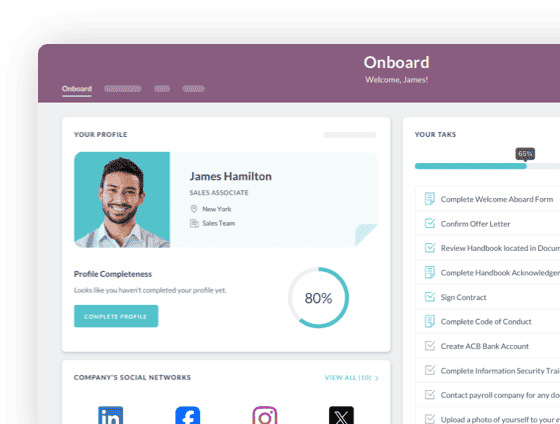
 Cut onboarding time
by 60%—here's the
Ultimate Checklist
that helped do it.
Cut onboarding time
by 60%—here's the
Ultimate Checklist
that helped do it.
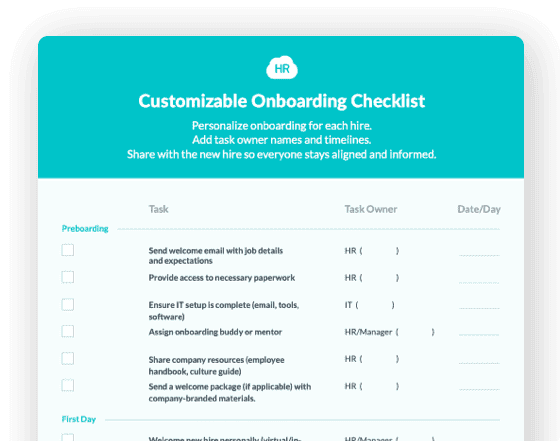
Employee Experience (EX) is now key to business success. It is no longer just an HR task. It is a strategic priority for leaders.
EX is the total of all employee interactions with a company. This starts when they apply for a job. It lasts until their last day and beyond. It includes everything a worker sees, feels, and lives through their whole time at the company. This is a complete view. It combines the physical workplace, the technology they use, and the company culture.
When a company creates a good EX, it directly boosts productivity, helps keep talent, and improves customer satisfaction. These factors are key to long-term business growth.
The Importance of a Robust Employee Experience
A strong EX is very important in today's job market. Companies that improve this experience have much higher employee engagement. They also have lower voluntary turnover. For example, great EX companies are often named "best places to work." This gives them a big edge in finding top talent. This focus makes sure employees feel valued, supported, and linked to the company's mission. Learning the basic parts of EX is the first step. It helps build a successful, high-performance culture.
The Business Relevance of a Positive Employee Experience
A strong EX is not just a perk. It is a core business strategy. Studies show that happy employees lead directly to better business results. Companies that focus on employee well-being and growth get a return on investment. This shows up in better operations and new ideas.
Also, a good internal experience often means a better Customer Experience (CX). Happy and engaged workers give better service. This proves the link between a great workplace and happy customers. When leaders understand the full scope of Employee Experience, they can change their company from the inside out. This leads to faster business action and more success globally.
Key Principles of a High-Impact Employee Experience Strategy
A successful EX strategy must focus on the moments that matter most to an employee. These key moments are called the employee journey. They include hiring, the onboarding experience, daily work, career development, and leaving the company. Improving these steps creates a positive and engaging work setting.
A good EX strategy makes sure the company culture is clear in daily work. Employee expectations will match reality. This complete view helps leaders find and fix problems. They can do this before the problems hurt retention or productivity.
Core Pillars of the Employee Experience
For leaders planning a full strategy, it helps to put EX into key areas. Focusing on these parts allows for targeted changes and clear results.
Technology and Tools: Give employees modern, easy-to-use technology. It should let them do their jobs well without extra stress. This includes simple internal systems and digital tools. Access to streamlined HR technology platforms is key for a good digital experience. This is vital for remote or hybrid work.
Physical Environment: The workspace must be safe and comfortable. This is true for a traditional office, a home office, or a hybrid setup. It must help with focus and teamwork. This covers office design, comforts, and giving all employees the needed equipment.
Organizational Culture: Culture is the most important part. It sets the shared values, beliefs, and behaviors of the company. It includes leadership style, feeling of community, recognition programs, and belonging. A strong culture relies on trust, psychological safety, and a shared goal.
Employee Wellbeing and Support: This is about the company caring for the mental, emotional, and physical health of its people. It means offering good benefits, flexible work, and tools to handle stress. This helps keep a healthy work-life balance.
Growth and Development: Give clear career paths. Offer learning chances and regular, helpful feedback. This keeps talented people. Workers must feel the company cares about their future. A well-defined talent management system supports this pillar.
Value Comparison: Employee Experience Versus Employee Engagement
Leaders often mix up Employee Experience and Employee Engagement. They are linked but different. Engagement is the feeling an employee has about their work. Experience is the cause or the design that creates that feeling. EX is the structure. Engagement is the result.
|
Feature |
Employee Experience (EX) |
Employee Engagement (EE) |
|
Definition |
The total sum of all employee interactions with the organization. |
The emotional and psychological commitment an employee has to their organization and its goals. |
|
Focus |
Designing and improving the work environment, processes, and culture. |
Measuring and influencing employee motivation, satisfaction, and effort. |
|
Time Horizon |
Continuous, ongoing, and long-term strategic design. |
Periodic measurement (e.g., annual or pulse surveys) and tactical intervention. |
|
Ownership |
Leadership, HR, IT, Operations, and all functional managers. |
Mainly owned by HR and individual managers. |
|
Goal |
To attract and retain talent by creating a desirable workplace. |
To drive discretionary effort and productivity. |
The main lesson is clear. You cannot keep high employee engagement without first building a good and positive Employee Experience. EX is the framework that allows engagement to happen.
Best Practices for Optimizing the Employee Experience
Changing the EX takes a clear, step-by-step approach. It must be based on what employees truly value. These simple steps are key for leaders who want lasting improvement.
Listen Actively and Continuously:
Do not just use annual surveys. Use regular, short pulse surveys, focus groups, and stay interviews. This helps you know employee feelings in real-time. Use this feedback to choose which improvements to make. Show that employee voices change the company. An effective employee feedback strategy is vital for this work.
Design Moments That Matter:
Find the most important moments in the employee journey. These include onboarding, reviews, promotions, and big life events. Make sure they are positive and supportive by design. For example, ensure the onboarding process is welcoming and efficient. This sets new hires up to succeed from day one.
Simplify the Digital Environment:
Check and simplify the internal tools employees must use. Invest in unified, cloud-based HR platforms. This lowers complexity and friction. A clean digital experience saves time and reduces burnout.
Empower Managers as EX Champions:
Train managers to be good coaches, communicators, and culture leaders. Managers have the biggest impact on an employee's daily experience. Give them the right tools and training. This lets them build trust and tailor the experience for their teams.
Promote Psychological Safety:
Create a place where employees feel safe to share ideas. They must feel safe to admit mistakes and speak up without fear. This trust is key for innovation and honest talk. Research shows that psychological safety is a key factor in how well teams perform.
Align Experience with Business Strategy:
EX plans must not be only in HR. They must link to the company's full business goals. For example, if a company wants to be a leader in innovation, the EX must focus on learning and giving people the freedom to solve problems. A strong HR strategy should always reflect the business strategy.
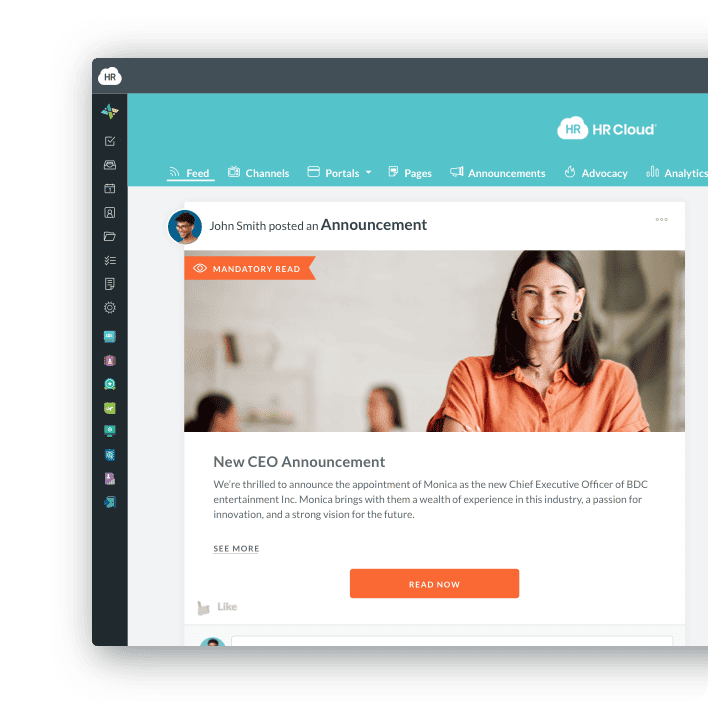
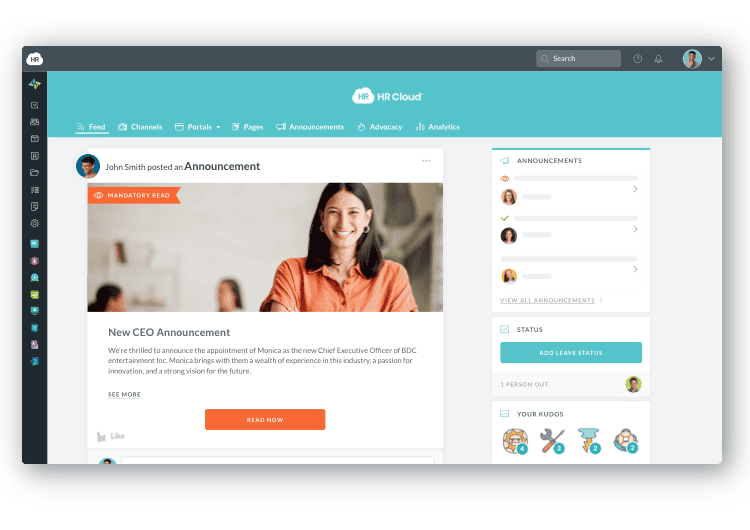
Pitfalls to Avoid in Employee Experience Initiatives
Leaders want to improve EX, but simple mistakes can ruin good plans. Leaders must watch out for these pitfalls. They need to ensure their work leads to real, lasting improvements.
Treating EX as a One-Time Project:
Employee Experience is not a project that you finish. It is a constant commitment from the company. If you do not make it part of your long-term human capital management plan, the good results will not last.
Focusing Solely on Perks Over Purpose:
Giving small perks like free snacks is not enough. Do not ignore core issues like bad culture or poor management. Employees care more about meaningful work, clear purpose, and respect than small office extras.
Ignoring Managerial Inconsistencies:
Bad individual managers can ruin a great EX plan. Managers must be trained. They must be held responsible for showing the desired culture. If not, the EX will be broken and untrustworthy.
Failing to Close the Feedback Loop:
Do not ask for feedback and then say nothing about it. This creates distrust. Employees will stop helping if they feel their voices do not lead to real change.
Adopting a "One-Size-Fits-All" Approach:
Different workers have different needs. This includes remote workers, frontline staff, and office employees. Failing to adapt the experience for these groups will make the strategy weak. It will make some workers feel left out. Remote employees need special plans for their communication and collaboration tools.
Real-World Industry Applications of Employee Experience
Retail and Hospitality:
These industries have high turnover and deal directly with customers. So, EX links right to CX. One big global retailer improved the EX for store staff. They made inventory technology simpler. They offered more flexible schedules. This work cut staff turnover. It also raised good customer reviews. This shows a clear link: A supported employee means a happy customer. Training and development for frontline staff is key here.
Technology Sector:
Tech companies depend on new ideas. This makes keeping talent vital. A top software company changed its EX. It focused on autonomy, mastery, and purpose. They started "innovation days." They cut down on red tape. They gave large budgets for professional development. This led to more patent submissions. Fewer top engineers quit. This proves that employee empowerment and innovation are linked.
Healthcare:
This is a high-stress sector with burnout risk. Healthcare EX must focus on wellbeing and smooth processes. A hospital system made shift-scheduling easier. They cut back-office work for nurses. They offered more mental health help. Improving the experience for critical care nurses lowered exhaustion. It also improved patient safety. This shows how important a supported workforce is. Forbes reported on similar trends. They showed the need for better support structures.
Implementing a Strategic Employee Experience Plan
A successful EX change follows a structured, data-driven plan. This ensures the changes are smart, not just reactions to problems.
Phase 1: Discovery and Assessment (The "Listen" Phase)
Map the Current Employee Journey: Create a detailed map of the employee's life cycle. Map it from hiring to leaving. Find all key moments, processes, and systems.
Gather Baseline Data: Use full surveys, focus groups, and HR data analysis. Look at turnover rates, engagement scores, and productivity. This shows the current level of employee happiness.
Identify Critical Pain Points: Use the data to find the top 3–5 areas where the experience is bad. These are the "moments that matter" that are currently negative.
Phase 2: Design and Alignment (The "Vision" Phase)
Define the Future State: Create a vision for the desired EX. Base this on business strategy and employee feedback. Ask: What should it feel like to work here?
Develop Targeted Initiatives: Create specific projects to fix the pain points. For example, if onboarding is a problem, the project could be to get a new, interactive onboarding software solution.
Secure Leadership Buy-in: Show the plan to the leaders. Include the expected return on investment (ROI) and needed resources. EX must be a priority for all departments, not just HR.
Phase 3: Execution and Launch (The "Act" Phase)
Pilot and Test: Test the new plans in a small pilot group or team first. Get feedback. Change the process quickly to make it better.
Rollout Across the Organization: When the pilot works, start the changes company-wide. Use clear, steady communication. Explain why the changes are happening. Tell employees how they will benefit.
Train Managers: Give all managers strong training. Make sure they know their role in keeping the new experience and culture strong.
Phase 4: Measure and Iterate (The "Improve" Phase)
Track Key Metrics: Keep watching the numbers linked to the old pain points. Look at turnover, absenteeism, and internal moves. Connect these to business results like productivity and customer satisfaction.
Solicit Continuous Feedback: Keep checking employee sentiment often. Gallup research says this continuous listening is key to keeping high engagement.
Refine and Adapt: Use the new data and feedback to make small, steady improvements. Treat Employee Experience as a living thing. It needs constant care and changes. An effective performance management system should be a key part of this phase.
Future Outlook and Emerging Trends in Employee Experience
The Employee Experience world keeps changing. Technology, social changes, and global events drive this. Leaders must get ready for the next wave of EX trends. This is key to keeping a competitive edge in finding and keeping top talent.
The Rise of Experience Personalization:
Customer experience is now personal. The future of EX will be the same. It will mean tailoring the work setting, growth paths, and benefits to each person's needs. AI and machine learning will help HR systems give personal advice for learning and career growth. This moves past generic offers.
Focus on the Holistic "Life Experience":
The line between work and life is fading. Future EX plans must look beyond the workplace. They must truly support a worker's full well-being. This means strong support for mental health, money smarts, and family care. It means seeing the whole person, not just the employee.
Decentralized and Distributed Work:
Work has shifted to hybrid and remote models. The digital EX will become most important. Companies must invest in digital workspace tools. These tools must ensure fair access, teamwork, and a sense of belonging for everyone. This is true no matter where they work. The physical office will change. It will no longer be a daily need. It will be a center for planned connection and innovation.
The Importance of Values and Ethical Alignment:
Workers today, especially younger people, want to work for companies whose values match their own. Future EX design will highlight transparency, social responsibility, and ethical leadership. Showing a clear commitment to Diversity, Equity, and Inclusion (DEI) is a must-have. A strong Employer Brand that truly reflects the internal experience will be a key difference maker.
By focusing on Employee Experience, companies do more than just manage staff numbers. They build a strong, high-performing workforce. This team is ready to drive better business results. Investing in the employee journey is one of the most reliable investments a business can make for its long-term success and agility.
Keep Reading
Embracing Diversity: Recognizing Different Cultures in the Workplace
Workplaces today reflect the incredible diversity of the world around us. People bring
Top 10 Benefits of Effective Communication
Talking about the benefits of effective communication? Most people nod politely and
Complete Guide to Creating an Employee Communication Strategy (7 Step Framework)
You need an employee communication strategy, not just communication tool stack. Because
Ready to streamline your onboarding process?
Book a demo today and see how HR Cloud can help you create an exceptional experience for your new employees.






